24-hour clock
For example, in the practice of medicine, the 24-hour clock is generally used in documentation of care as it prevents any ambiguity as to when events occurred in a patient's medical history.Style guides and military communication regulations in some English-speaking countries discourage the use of 24:00 even in the 24-hour notation, and recommend reporting times near midnight as 23:59 or 00:01 instead.However, they have been used occasionally in some special contexts in the United Kingdom, France, Spain, Canada, Japan, South Korea, Hong Kong, and China where business hours extend beyond midnight, such as broadcast television production and scheduling.The GTFS public transport schedule listings file format has the concept of service days and expects times beyond 24:00 for trips that run after midnight.The 24-hour clock is commonly used there only in some specialist areas (military, aviation, navigation, tourism, meteorology, astronomy, computing, logistics, emergency services, hospitals), where the ambiguities of the 12-hour notation are deemed too inconvenient, cumbersome, or dangerous.Military usage, as agreed between the United States and allied English-speaking military forces,[9] differs in some respects from other twenty-four-hour time systems: The first mechanical public clocks introduced in Italy were mechanical 24-hour clocks which counted the 24 hours of the day from one-half hour after sunset to the evening of the following day.[11] Sandford Fleming, the engineer-in-chief of the Canadian Intercolonial Railway, was an early proponent of using the 24-hour clock as part of a programme to reform timekeeping, which also included establishing time zones and a standard prime meridian.[23] [24] The use of the 24-hour clock in the United Kingdom has grown steadily since the beginning of the 20th century, although attempts to make the system official failed more than once.
24-hour
24-hour (12-hour orally)
Both in common use
12-hour
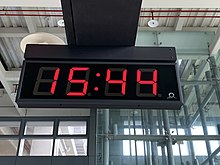
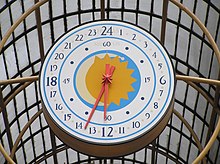

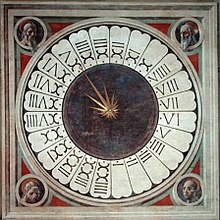
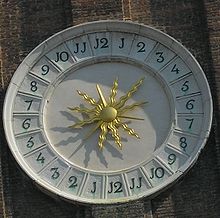
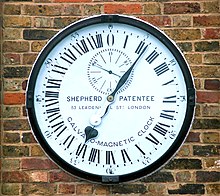
timekeepingmidnight12-hour clockISO 8601medicineambiguitymedical historyMiaoli HSR stationCuritibaleap seconddot on the lineStyle guidesUnited States NavyUnited States Marine CorpsMicrosoft WindowsUSS MidwayAmerican EnglishdiurnalLeading zerosMilitary time zonesNATO phonetic alphabetUS Eastern Standard TimeJuliettGreenwich Mean TimeCoordinated Universal TimePaolo UccelloFlorence CathedralVenicemechanical 24-hour clocksdefeat on White MountainSandford FlemingIntercolonial Railwaytime zonesprime meridianInternational Meridian ConferenceShepherd Gate ClockRoman numeralsCanadian Pacific RailwaymidsummerWorld War IUnited States ArmyBritish Broadcasting CorporationPan American World Airways CorporationWestern AirlinesBritish RailLondon TransportLondon UndergroundCommonwealth24-hour analog dialDate and time representation by countryDecimal timeHindu units of timeItalian six-hour clockList of military time zonesMetric timeThai six-hour clockTraditional Chinese timekeepingCommon Locale Data Repositorylocaleoperating systemsUnited States Department of the NavyLexicoOxford University PressBibcodeInternet ArchivePort Arthur, OntarioThe National ArchivesUnited KingdomThe TimesBrownsville, TexasMoore FieldEl PasoPresentFutureEternityMeasurementstandardsChronometryUnit of timeOrders of magnitude (time)MeasurementsystemsRelative hourDaylight saving timeChineseDecimalHexadecimalMetricSiderealTime zoneCalendarsLunisolarGregorianJulianHebrewIslamicSolar HijriHindu PanchangClocksastronomicalastrariumatomicquantumhourglassmarinesundialmechanicalstopwatchwater-basedCuckoo clockDigital clockGrandfather clockHistoryTimelineChronologyAstronomical chronologyBig HistoryCalendar eraDeep timePeriodizationRegnal yearPhilosophy of timeA series and B seriesB-theory of timeChronocentrismDurationEndurantism